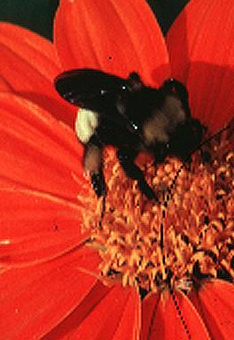NOAA/WDS Paleoclimatology - Moose Lake, Alaska 6000 Year Midge Inferred July Temperature
This archived Paleoclimatology Study is available from the NOAA National Centers for Environmental Information (NCEI), under the World Data Service (WDS) for Paleoclimatology. The associated NCEI study type is Insect. The data include parameters of climate reconstructions|insect|paleolimnology with a geographic location of Alaska, United States Of America. The time period coverage is from 6007 to -20 in calendar years before present (BP). See metadata information for parameter and study location details. Please cite this study when using the data.
Dataset Citation
- Cite as: Clegg, B.F.; Clarke, G.H.; Chipman, M.L.; Chou, M.; Walker, I.R.; Tinner, W.; Hu, F.S. (2010-08-09): NOAA/WDS Paleoclimatology - Moose Lake, Alaska 6000 Year Midge Inferred July Temperature. [indicate subset used]. NOAA National Centers for Environmental Information. https://doi.org/10.25921/yape-t984. Accessed [date].
- Please refer to Credit tab for full citation information.
Dataset Identifiers
- doi:10.25921/yape-t984
- noaa-insect-9953
- NCEI DSI 1200_02
- NCEI DSI 1200_01
ISO 19115-2 Metadata
noaa-insect-9953
| Search Data |
|
| Download Data |
|
| Distribution Formats |
|
| Ordering Instructions | Contact NCEI for other distribution options and instructions. |
| Distributor |
NOAA National Centers for Environmental Information ncei.info@noaa.gov |
| Dataset Point of Contact |
NOAA National Centers for Environmental Information ncei.info@noaa.gov |
| Dataset Point of Contact | Data Center Contact NOAA World Data Service for Paleoclimatology 828-271-4800 paleo@noaa.gov |
| Coverage Description | Date Range: 6007 cal yr BP to -20 cal yr BP; |
| Time Period | -4057 to 1970 |
| Spatial Bounding Box Coordinates |
West: -143.5988
East: -143.5988
South: 61.3742
North: 61.3742
|
| Spatial Coverage Map |
| General Documentation |
|
| Associated Resources |
|
| Publication Dates |
|
| Data Presentation Form | Digital table - digital representation of facts or figures systematically displayed, especially in columns |
| Dataset Progress Status | Complete - production of the data has been completed |
| Data Update Frequency | Data update frequency not available |
| Supplemental Information | STUDY NOTES: Multi-decadal midge assemblage and midge-inferred July temperature data for Moose Lake, Alaska, for the past 6000 years. ABSTRACT SUPPLIED BY ORIGINATOR: Despite their importance for evaluating anthropogenic climatic change, quantitative temperature reconstructions of the Holocene remain scarce from northern high latitude regions. We conducted high-resolution midge analysis on the sediments of the past 6000 years from a lake in south-central Alaska. Results were used to estimate summer temperature (TJuly) variations on the basis of a midge temperature transfer function. The TJuly estimates from the near-surface samples are broadly consistent with instrumental and treering-based temperature data. Together with previous studies, these results suggest that midge assemblages are more sensitive to small shifts in summer temperature (~0.5°C) than indicated by the typical error range of midge temperature transfer functions (~1.5°C). A piecewise linear regression analysis identifies a significant change point at ca. 4000 years before present (cal. BP) in our TJuly record, with a decreasing trend after this point. Episodic TJuly peaks (~14.5°C) between 5500 and 4200 cal. BP and the subsequent climatic cooling may have resulted from decreasing summer insolation associated with the precessional cycle. Centennial-scale climatic cooling of up to 1°C occurred around 4000, 3300, 1800-1300, 600, and 250 cal. BP. These cooling events were more pronounced and lasted longer during the last two millennia than between 2000-4000 cal. BP. Some of these events have counterparts in climatic records from elsewhere in Alaska and other regions of the Northern Hemisphere, including several roughly synchronous with known grand minima in solar irradiance. Over the past 2000 years, our TJuly record displays patterns similar to those inferred from a wide variety of temperature proxy indicators at other sites in Alaska, including climatic fluctuations coeval with the Little Ice Age (~245 cal. BP), the Medieval Climate Anomaly (~1000 cal. BP), and the First Millennial Cooling (~1400 cal. BP). To our knowledge, this study offers the first high-resolution, quantitative record of summer-temperature variation that spans longer than the past 2000 years from the high-latitude regionsaround the North Pacific. |
| Purpose | Records of past temperature and environment derived from beetle and other insect fossils. Parameter keywords describe what was measured in this dataset. Additional summary information can be found in the abstracts of papers listed in the dataset citations. |
| Dataset Citation |
|
| Cited Authors |
|
| Originators |
|
| Publishers |
|
| Theme keywords |
Global Change Master Directory (GCMD) Science Keywords
|
| Data Center keywords |
Global Change Master Directory (GCMD) Data Center Keywords
|
| Place keywords |
|
| Use Constraints |
|
| Access Constraints |
|
| Fees |
|
Last Modified: 2024-04-03
For questions about the information on this page, please email: ncei.info@noaa.gov
For questions about the information on this page, please email: ncei.info@noaa.gov

